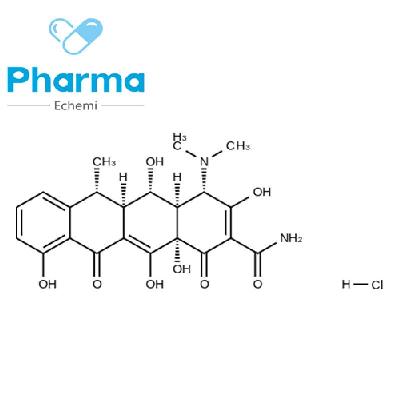-
Categories
-
Pharmaceutical Intermediates
-
Active Pharmaceutical Ingredients
-
Food Additives
- Industrial Coatings
- Agrochemicals
- Dyes and Pigments
- Surfactant
- Flavors and Fragrances
- Chemical Reagents
- Catalyst and Auxiliary
- Natural Products
- Inorganic Chemistry
-
Organic Chemistry
-
Biochemical Engineering
- Analytical Chemistry
-
Cosmetic Ingredient
- Water Treatment Chemical
-
Pharmaceutical Intermediates
Promotion
ECHEMI Mall
Wholesale
Weekly Price
Exhibition
News
-
Trade Service
1.
1.
The day before, PolyphorAG announced that the combination of Balixafortide and Eribulin in the treatment of HER2-negative, locally recurring or metastatic breast cancer has failed the global phase III clinical trial
In addition to Balixafortide, Fosun Pharma also has 3 breast cancer drugs in clinical stage and 3 breast cancer drugs approved for marketing.
Pharmaceutical giants such as Pfizer and Eli Lilly also set up early, setting off a competition for China's breast cancer treatment market
The Center for Drug Evaluation of the National Medical Products Administration of China announced in February that AstraZeneca's Class 1 new drug AZD9833 has obtained three clinical trials with implied approval and plans to develop a treatment for breast cancer
The "Healthy China 2030" Planning Outline proposes to increase the 5-year survival rate of tumors by 15%
2.
2.
With the continuous increase in the number of breast cancer patients and the continuous listing of innovative drugs, the size of the breast cancer drug market in China has maintained rapid growth
(Data source: Guanyan Tianxia (shz))
The current drugs for the treatment of HER2-positive breast cancer in China can be divided into three categories in terms of drug properties.
According to incomplete statistics from the Prospective Research Institute, there are currently >20 domestic companies in the development of ADC drugs, and there are currently several ADC drugs targeting Her2 that have entered the clinical stage
HER2 domestic ADC drug under development (clinical stage)
(Source: Qianzhan Industry Research Institute)
According to IQVA data, the sales of Trastuzumab and Pertuzumab in public hospitals in China's key cities in 2018 were 1.
Trastuzumab sales in public hospitals in key cities (unit: ten thousand yuan)
(Source: Qianzhan Industry Research Institute)
Pertuzumab sales in public hospitals in key cities (unit: ten thousand yuan)
(Source: Qianzhan Industry Research Institute)
The breast cancer drug research and development market is booming
3.
3.
In April 2021, Director Yang Zhimin of the Drug Evaluation Center of the State Food and Drug Administration publicly introduced that the review of new drugs on the market has been accelerated after the reform
.
Communicate at different R&D nodes of clinical trials, apply for breakthrough accreditation, conditional and priority review
.
Minister Yang Zhimin analyzed the representative drugs approved for breast cancer in China as of April 2021
.
In terms of chemotherapeutics, eribulin and Utidrolone have been newly approved; in endocrine therapy, the approval of the CDK4/6 inhibitors pibacillil and abexilide has improved patient benefits; HER2 targeted therapy drugs, Added self-developed pyrrotinib and initumab
.
(Image source: Minister Yang Zhimin's PPT)
There are many hidden worries in the seemingly thriving breast cancer drug research
.
A large number of small molecule products with the same target and different structures have been declared, and a large number of ADCs with different structures of the same target, different or the same monoclonal antibody have emerged.
The research population has pushed forward, the choice of combination and single drugs, and the choice of back and front lines.
In the current situation, there are dilemmas in different aspects, such as wasting resources, prolonging research and development time, and increasing homogeneous products
.
In addition, due to the long R&D cycle of innovative drugs, some pharmaceutical companies adopt the License-in (authorized introduction model) model in order to quickly improve R&D capabilities and obtain innovative drugs
.
The pharmaceutical company pays a certain down payment to the "product authorizing party", and agrees on a certain amount of milestone fees (according to product development progress) and future sales commissions, so as to obtain product development, production and sales in certain countries (regions).
Commercialization rights
.
Generally speaking, a drug needs to go through the preclinical phase, clinical phase I, clinical phase II, clinical phase III, marketing application, and marketing approval before it goes on the market.
License-in can introduce drugs at different stages
.
In the first quarter of 2021, the number of new drug "license-in" authorized cooperation agreements reached between China Biopharmaceutical Corporation and overseas companies exceeded 30.
The introduction parties included BeiGene, Zai Lab, Qilu Pharmaceutical, Simcere, and Fuhong Han Lin Lin and more than 20 companies
.
Genting Shinyao, which was established on July 14, 2017, once relied on the License-in to obtain the "authority" of 8 foreign innovative drugs, and created the myth of using 200 million US dollars to "pry" 2 billion US dollars
.
In fact, the biggest feature of License-in is "fast", but fast also means risk and uncertainty
.
CXCR4 inhibitors have failed clinically, and Fosun Pharma has lost nearly 100 million yuan
.
The clinical failure of Avapritinib introduced by Cornerstone in GIST, and the failure of Vebicorvir, a nucleocapsid inhibitor introduced by BeiGene, in the phase II clinical trial of hepatitis B, all indicate the risk of the license-in model
.
After all, on the road of new drug development, risks and benefits have always coexisted
.







